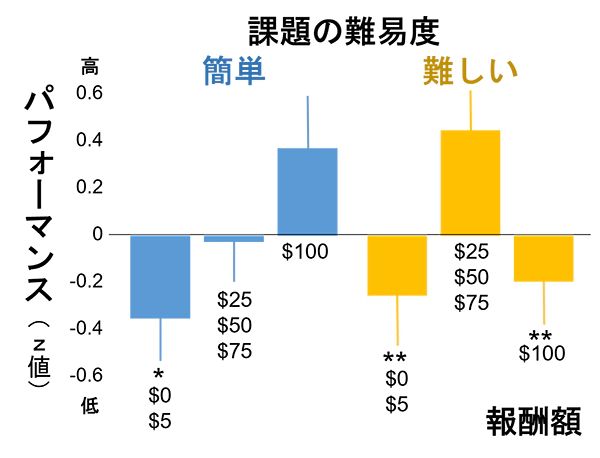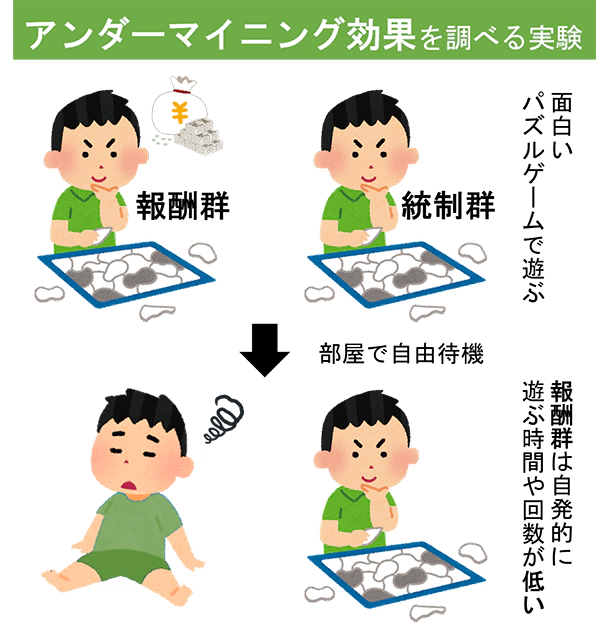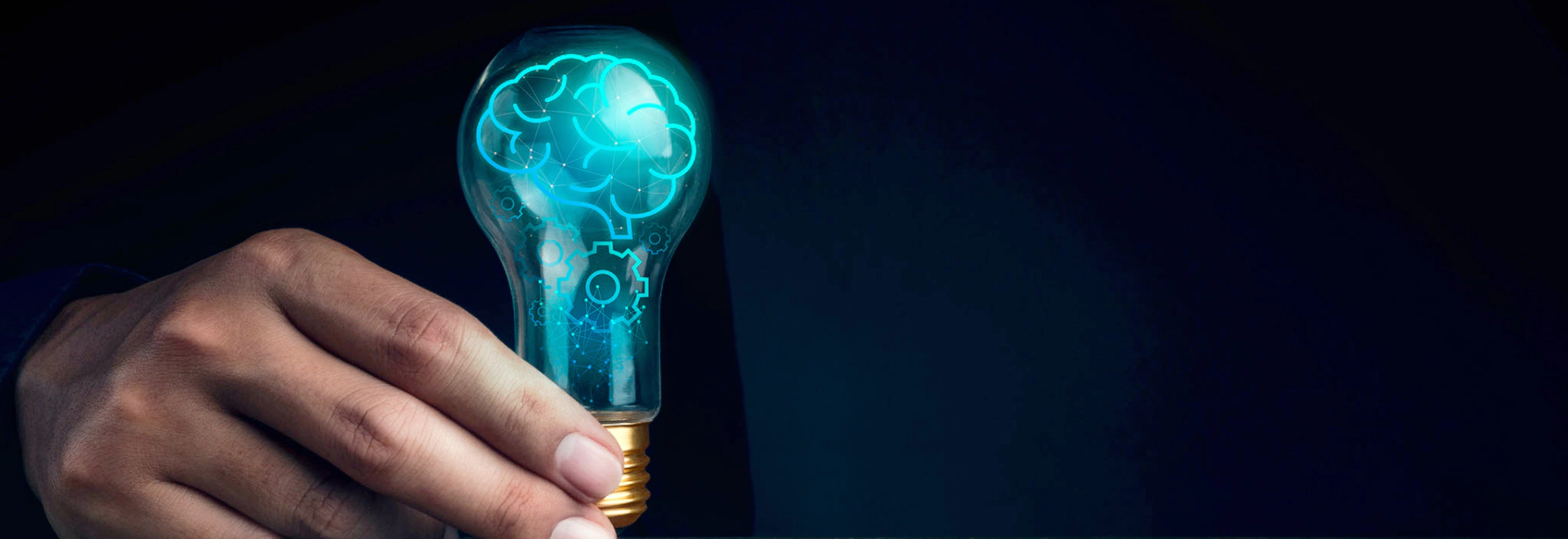経営者の皆さん。もしくは人事制度を企画する立場にいる方へ。
報酬設計はどうされていますか?そしてどう決めていますか?
ほぼすべての企業において、組織や個人ごとに売上目標なりの目標設定があるだろうし、そうした目標の達成度合いに応じて昇給やボーナスなどの報酬が受け取れとれるような人事的制度が設けられているはずだ。外資系の保険会社の超高額な成果報酬がニュースになったりもする。その背景には「お金で人のやる気や幸福度が上がる」という、疑問を持つのもバカバカしい暗黙の了解がある。
しかし、自分のチームメンバーに最高のパフォーマンスを期待したいのなら、カネに任せるやり方は最適ではない。なぜならば、安易な報酬設計をしてしまったことで、本来の目的を大きく外した不幸な結果を招いた多くの事例が存在するからだ。一方で、自律性・成長志向・仕事の意義・人間関係といった、金銭的ではない要因が人間の本質的なやる気と生産性に関わるといった科学的な知見が増えている。本稿ではこの点について脳科学の観点から考察を行った。
1. ノルマや報酬は取扱いにご注意
人生を通して我々は目標を持つこと、または持たされることが多い。そして、目標設定をするときには大抵ご褒美への期待も一緒についてくる。大嫌いな算数の勉強を頑張れたのは、90点のテストを見せればお母さんがお小遣いをくれたからかもしれない。幼少期から当たり前のように使われている目標とご褒美だが、取扱い方法を間違えると望んでいない方向に人間の行動を導いてしまうことがある。
特にビジネスの世界では注意が必要だ。基本的にどこの企業にも組織やチームごとに売上目標があり、個人個人でも様々な目標を立てているはずだ。そして、往々にして、立てた目標の達成度合いに応じた昇給やボーナスなどの報酬が受け取れとれるような制度が設けられているだろう。時には金融機関の営業社員に課せられるような(過剰な)ノルマと青天井の成果報酬が与えられるかもしれない。エサ(=カネ)で釣れば人はやる気があがる。疑問を挟まれることのない命題だが、自分のチームメンバーに最高のパフォーマンスを期待したいのなら、そのやり方は最適ではないかもしれない。
第二次世界大戦後間もない1947年頃、イスラエルとヨルダンの間、死海西岸にあるクムランの洞窟から通称「死海文書」と呼ばれる世界最古の聖書関連書物が入った壺がアラブの遊牧民族ベドウィンの青年たちによって発見された。死海文書はイエス時代のユダヤ教に関する貴重な史料であり、20世紀最大の考古学的発見と言われて多くの研究者の関心を集めた。発掘調査をするにあたり、考古学者はベドウィンたちには破格の報酬を払ってさらなる文書の捜索をさせたi。その結果集められたのはチリジリの断片ばかりだった。
一体なぜか。原因は報酬額の決定方法のミスにある。報酬は「見つかった断片一つあたり」に支払われていたのである。したがって、いくら小さな断片でもできるだけたくさん持ってくれば、その分多くの報酬が受け取れたという訳である。ベドウィンたちは超貴重な歴史文書をビリビリに破いてより多くの報酬を得ようとしたのだ。彼らにとって、既にボロボロの紙切れの歴史的価値などどうでもよかったようである。後に、ヘブライ語聖書の専門家ロラン・ド・ヴォーは断片の大きさに応じて報酬額を決定する方法に変えたそうだが、時すでに遅し。
しかし、報酬制度の抜け目を探してずる賢いことをするのはベドウィンだけではない。アメリカでは医療の質の向上を図るために「ホスピタルレコードカード」という制度が導入され、病院ごとの治療のクオリティが評価・公表されるようになった。すると、病院は比較的回復しやすい軽症の患者の治療にばかり専念することで、アウトカムの改善度を向上させようとしたii。完全回復が難しい重症患者の治療を頑張るよりも、効率よく自分達の評価を上げられるからだ。
日本のリハビリ医療業界でも似たような現象が起きている。脳卒中など特定の疾患にかかった患者に対してリハビリテーションを行う回復期病棟では、入棟時と退棟時の日常生活動作(Activities of Daily 日本のリハビリ医療業界でも似たような現象が起きている。脳卒中など特定の疾患にかかった患者に対してリハビリテーションを行う回復期病棟では、入棟時と退棟時の日常生活動作(Activities of Daily Living、以下ADL)の差分を測り、改善度に応じて診療報酬を加算するという制度が数年前に導入された。この制度は同じ期間でより効果の高い治療や訓練を実施するための動機となり、リハビリテーションの質を向上させると思われていた。結果として、制度導入後に患者の退棟時のADLのスコアが上昇することはなかったのだが、ADLの改善度は大きくなるというおかしな現象が発生した。この理由はスコア推移のグラフiiiを見れば一目瞭然である。患者を受け入れた時、つまり入棟時に測るスコアが不自然なほどに下がっていたのだ。どうやら国や文化によらず、報酬制度の設計者の思い通りに人間を動かすのは難しいようだ。
もう少しビジネス寄りの視点で見てみると、目標やノルマが持つ、より危険な一面を見ることができる。
リーマンショックでも潰せないと言われる程の影響力を持っていた米国の超大手銀行、ウェルズ・ファーゴは、収益向上戦略の中核として当座預金口座を持つ顧客に対して資産運用サービスやクレジットカードなどの抱き合わせ販売を行うクロス営業に過剰なノルマを課し、達成度合いに応じてボーナスを支払っていた。営業成績が下位10%の従業員は解雇すると脅され、銀行強盗が来ても電話をかけ続けろとまで言われていたらしい。そしてこれは米国金融業界における一大スキャンダルへと繋がってしまった。顧客の同意を得ずに架空口座やクレジッカードを開設する不正営業があちこちで横行し、無断で開設された口座は200万件にのぼると言われる。結果として多額の制裁金を支払うことになり、ウェルズ・ファーゴの名声は地に落ちたiv。原因は不正を働いた従業員のモラルの低さではない、過剰なノルマが不正を行わせたのだ。
似たようなことは身近でもたくさん起こっている。国内でもここ数年で2017年の商工中金の不正融資問題、2019年のかんぽ生命の不正販売問題など類似した不祥事が山ほど発覚しているv。カネを上手く回すのが仕事のはずの金融機関も、目標設定と報酬設計の罠にはまってしまっているのだ。
目標設定次第では、貴重な死海文書が刻まれたり、銀行の不正の原因になったりする。だが、目標を達成したら金銭的なご褒美をあげるという報酬設計そのものは、果たしてどの程度効果があることなのだろうか。ここにも少し疑いを挟む余地がありそうだ。
いかにもモチベーションが上がりそうな成果連動型の報酬制度(成果報酬)も、報酬が高すぎると難しい課題を達成するのに逆効果だということが神経科学の研究からわかっている。あまりに大きすぎる報酬は、人間にとって「失うのが怖い」というプレッシャーになるのである。2012年Neuron誌に掲載されたカリフォルニア工科大学の研究では、fMRI(機能的核磁気共鳴画像法)を用いて脳活動からこの成果報酬のパラドクスを明らかにしたvi。
実験ではまず、被験者に提示する報酬額を0~100ドルで変化させる。そして画面に表示される×印のスタート位置から20㎝離れた四角形の枠の中にバネで繋がっているように動く2つのボールを上手く収めるという特殊でちょっとコツがいるタスクを行わせた(図1)。HardとEasyの2種類の難易度を用意したところ、ある程度報酬とパフォーマンスは相関を示した(お金をもらえた方が成績が良くなる)。しかし、Hard条件で高額な100ドル貰えかもしれないという時はパフォーマンスがむしろ低下してしまった。何かをもらえる時よりも失うときのショックを大きく感じてしまうことを「損失忌避傾向」と呼ぶが、これには個人差がある。損失忌避傾向が高い人は、高額な報酬がもらえるかもしれない条件下でやる気の中枢とも言える脳の腹側線条体という部位の活動が減り、それに応じて課題の成績も下がってしまうことが分かった。つまり、高額の報酬を提示された後にタスクを行うことで、それはもはや報酬ではなく、失敗によってもたらされる損と感じられ、その感覚が成績を下げてしまうのである。

高額の報酬を約束したからといって大きな仕事が成し遂げられるとは限らない。むしろ、プレッシャーを感じて普段よりパフォーマンスが下がる可能性すらあるのだ。
このように人間の本質を無視した下手な目標・報酬設計をすると、人をズルいやり方に走らせたり、過度なプレッシャーを生んでパフォーマンスを下げてしまう。
では、人間の脳の特性を理解して上手に動機づけして、パフォーマンスを発揮する環境を整える方法はあるのだろうか。そのヒントは心理学や神経科学といったヒトの研究の中にある。
2. パフォーマンスを上げる動機づけへのヒント~外発的動機付けvs. 内発的動機付け~
多くの企業では、報酬設計として設定した目標に対し、その達成度合いを評価してボーナスなどのインセンティブが払われる仕組みになっているはずだ。経営の神様とも言われる松下幸之助氏も「古来、何ごとによらず信賞必罰ということがきわめて大切とされている。功績あればこれを賞し、過ちあればこれを罰する。その信賞必罰が適切に行なわれてはじめて、集団の規律も保たれ、人びとも励むようになる。いいことをしてもほめられず、よくないことをしても罰せられないとなったら、人間は勝手気ままにしたい放題をして、規律も秩序もメチャメチャになってしまうだろう」と言っているvii。現代で言うところの社長賞やボーナスなど、多かれ少なかれ成果報酬はほとんどの企業で導入されている。
しかし、外発的(他人から与えられる)・金銭的な報酬さえうまく設計すれば業績が上がり、人が動かせると思うのは、かなりのリスクである。これは、人間の内発的な動機の重要性とパワーを過小評価している。
1990年代半ば、Microsoftは 1990年代半ば、Microsoftは Encartaという百科事典を作り始めた。たくさんの専門家にお金を払って記事を書いてもらい、プロジェクトマネージャーが全体を管理する。予算と納期が決まった一般的なビジネスプロジェクトだ。何年か後に、別の会社で百科事典のプロジェクトが開始された。これは予算もない、報酬もない、締め切りもない、誰も管理しない、気が向いたユーザーが自ら好きだから記事を書くものであった。一般的な概念からすると、これは途方もなく無謀で稚拙なプロジェクトに思われる。
しかし世に残ったのは後者つまり、Wikipediaである。どうやら人はカネを貰うよりも、好きという感情のような自分の内側から湧き出てくるモチベーション(内発的動機)に動かされやすいようだ。
過去40年に渡る、延べ20万人を対象としたデータを総括(メタアナリシス)した結果viii、学業、仕事、運動などあらゆる場面で業績・成果を予測する最も強い因子は内発的動機付けであることが示された。内発的動機付けとは、「楽しいからやる・好きだからやる」というモチベーションを上げることを指し、「金をもらうからやる」という外発的な動機付けと対で語られることの多いモチベーションの一形態だ。
しかしながら、成果が受け取る報酬に直結しているときには、内発的な動機付けがパフォーマンスに与える影響は弱くなってしまう傾向があることも同メタアナリシスによってわかっている。これはアンダーマインニング効果と呼ばれ、「本来好きでやっていたことに対して報酬を支払われるようになると、外発的な報酬なしではやる気がなくなってしまう」という現象で説明できる。
アンダーマイニング効果についてもう少し説明しよう。仕事の成績に応じた金銭報酬を約束すると、その課題に取り組もうという動機づけは高まるが、もともとあった内発的動機づけは押し出されて減弱してしまう。あなたが趣味でやっていた大好きのことでも、金を渡されるともう純粋な好きという気持ちだけではできなくなってしまう。こうした現象をアンダーマイニング効果と呼ぶ。玉川大学の松元健二先生が、アンダーマイニング効果の典型的な心理学的実験パラダイムとして紹介するのは次のようなものであるix。

最初に被験者は、パズルゲームなどの内発的に動機づけられる面白い課題で遊ぶ。このとき被験者の半分は、その課題の成績に応じた外的報酬を約束される(報酬群)。残りの被験者はそのような成績に応じた外的報酬の有る無しについては何も聞かされない(統制群)。その後、被験者は実験者のいない部屋に案内され待たされるが、その部屋の中に最初に遊んだ課題があって、(報酬がなくても)それをどれくらいやるかを観察する。
というものだ。
先行研究では統制群に比べ報酬群で自由選択期間に標的課題で自発的に遊ぶ時間が短かったり回数が少なかったりすることが示されている。
前提として
・そもそも、つまらない課題ではアンダーマイニング効果は生起しない。
・外的報酬を受け取ること自体ではなく、外的報酬を「予期する」ことが影響する
ことが重要である。
さて、英国のレディング大学の村山教授たちチームは、アンダーマイニング効果の神経基盤を確認するために、ある実験を行ったx。
大学生男女28名に対して、5秒ぴったりでストップウォッチを止めるというちょっと面白い課題を使い、課題の成績に応じて金銭報酬が貰えることを約束して課題を行ったグループ<報酬群>と、そのような約束なしに課題を行ったグループ<統制群>とに分け、課題を行っている最中の脳活動を計測したのだ。 報酬群には、課題をクリアすると1ポイント付与された(1ポイント=200円の金銭報酬が後にあることを教える)。統制群には、課題のみ与えた(セッション終了後に成績と関係なく同額の報酬を与えた)。実験は2つのセッションで行われ、第2セッションでは、報酬群にも報酬がないことを伝えたうえで実験を行った。セッションの間には、課題を自発的にできるような自由時間を3分間設けた。
結果、第1セッションで、両群とも、やる気に関わる線条体などの脳活動が見られた。しかし、金銭報酬がないことを明示して課題を行った第2セッションでは、第1セッションで見られた脳活動が報酬群では消失したが、<統制群>では保たれていた。さらに、<報酬群>においては2つ目のセッションで、課題達成における成績も格段に落ちてしまっていた。

このように、外発報酬は内発的なやる気を奪う悪いものかというと、そうでもないようだ。外発的金銭報酬は「量的な」成果の指標とはより強く関係することは分かっている。しかし一方で、質は下がってしまう。内発的な動機付けは量的な面では外発に負けても、「質的な」成果の良さにつながる。外発的な金銭報酬があれば量的には頑張る、が質はいまいちという点で一概に悪いというわけではないが効果には限度がある。そのため、うまく内発的動機付けと組み合わせることで、量と質ともにパフォーマンスを高められる可能性はあるxi。
また、外発的報酬が効く・効かないかは仕事の内容にもよる。グラックスバーグというプリンストン大学の研究者がロウソク問題という課題を使ってこの問題を明らかにしたxii。
【ロウソク問題】
目標:コルクボードの壁にロウソクを固定し、点火する
条件:溶けた蝋が滴り落ちないようにする
使えるもの:ロウソク・1束のマッチ・1箱の画鋲
大体の人が、画鋲でロウソクを壁に刺そうとするがこれは間違いだ。正解は画鋲が入っている箱にロウソクを立てて箱を画鋲で壁に固定する。つまり、画鋲が入っている箱を使うというトリッキーかつクリエイティブな発想が要求される課題だ。
彼は参加者を集めて「上位25パーセントの人には 5ドルお渡しします。1番になった人には 20ドルです」と伝える。半世紀前の物価が想像しにくいが、数分の作業でもらえる金額としては悪くなさそうだ。さて、このグループはどれくらい早く問題を解けたのか。
なんと、報酬を提示しない群と比べて、報酬を提示された群は平均で3分半も余計に時間がかかった。
一方で、画鋲と箱をバラバラに出すとバカでもわかる課題になる。そうすると今度は報酬が与えられた条件の方が早く正解にたどり着いた。
このように、単純作業には報酬が機能する可能性が高いが、創造的な仕事はそうでなさそうだ。『モチベーション3.0』の著者として有名なダニエル・ピンクは、こうした結果から20世紀的な大量生産時代のマネジメントではこうした報酬設計が機能するが、現代社会の業務においてそれを踏襲する(機械的なご褒美と罰というアプローチ)ことはうまくいかないと主張している。そして、あまりに多くの組織が、こうした報酬設計などの人事制度を、時代遅れで検証されていない前提に基づいて行っていること、つまり科学でなく神話に基づいて行っているということを指摘しているxiii。
創造的な仕事が求められる現代のVUCA的なビジネス環境で成功したいのなら、人をより甘いアメで誘惑したり、より鋭いムチで脅すのは的外れである可能性が高いのだ。
ちなみに成果報酬の制度の下で働く人は仕事優先になり、家族や友人と過ごす時間の優先度を下げることも分かっているxiv。こうした傾向が果たして、本人や周囲の幸福につながっているかも注意深く観察する必要がありそうだ。
3. 内発的動機付けを生む4つのヒント
①自律性を持たせる
ではどうすれば、内発的動機付けを向上できるのか。その一つが「自律性」に、何を行うか、いつ行うか、どこで行うか、どのように行うかについての自分で決められる裁量を与えることだ。大規模な調査によると、個人やチームに自律性が与えられると、仕事に対する責任が大きくなり、より多くの時間とエネルギーを費やし、より効率的で革新的なプロセスを開発して、最終的により高い品質と量を生み出すことが示されている。たとえば、ミシガン州立大学のフレデリック・モーグソン教授らは、印刷会社での調査から、チームに自律性を与えることで、より多くの労力を費やし、より多くのスキルを使用し、問題解決により多くの時間を費やすことを発見したxv。
その脳内基盤も明らかになっている。村山教授は上で紹介した研究の後に、自己決定感の高い条件と低い条件を設定し、課題遂行中の脳活動に、条件間でどのような違いが現れるかを調べたxvi。
大学生男女35名に対し、MRI装置の中で、2つの異なるデザインのストップウォッチが提示され、そのいずれか一方を使って、ストップウォッチを5秒でとめるという課題を用いた。9種類のストップウォッチから提示される2つのストップウォッチを、自分で選べる条件(自己選択条件)あるいはパソコンにより選択される条件(強制選択条件)にて選択した。
実験後のアンケートでは、94%の被験者が、自己選択条件のほうが強制選択条件よりも、ポジティブな気分になったと答えた。また、課題成績も、自己選択条件のほうが強制選択条件よりも有意に高かった。
脳の活動としては、やる気に関わる前頭前野内側部において自己選択条件の場合のみ、成功した場合も失敗した場合も活性化が見られたことから、自己決定によって、成否双方のフィードバックを以降の動機付けに反映させられるようになっていることを示唆している。
②熟達志向を育む
内発的動機付けを伸ばすもう一つの方法が、熟達=マスタリー志向になることだ。熟達志向とは、自身の専門的な知識、スキル、専門知識を開発することを志向することだ。調査によると、従業員にこうしたスキル習得の機会が与えられると、彼らは自然と学び、また会社に貢献する動機付けを高めることが分かっているxvii。
また、マスタリー志向の人は、難しい課題に進んでチャレンジしていくのに対し、パフォーマンス志向(自身の成長より成績が高ければ良いという志向)の人は、簡単な課題しか行わないことも分かっている。fMRIによる脳スキャン実験の結果、不正解のフィードバックを与えられた際、パフォーマンス志向の人たちの脳では背側前頭前野と前頭皮質の活動が大幅に減少していた。一方で、マスタリー志向の参加者は殆ど変化がなかった。このことから、たとえ失敗をしてもマスタリー志向であることで、内発的動機付けを維持=やる気の減少を抑えられていると解釈できるxviii。日本的な総合職の新卒採用では短期間で強制的なジョブローテーションを繰り返し、オールラウンダーとなって出世することを期待されるが、将来別に必要ないとわかっている業務にどれだけ熟達志向になれるのか、と心配になるような結果である。
③目的と意味を感じてもらう
内発的動機付けを高める3つ目のヒントは、目的・ゴール設定である。つまり、意味のある大義に貢献する感覚を味わうことだ。ペンシルバニア大学ウォートン校のアダム・グラント教授による調査では、働いている人が自分の仕事が役に立っている先のクライアント・顧客・もしくはエンドユーザーに会うことで、仕事の目的をより明確に理解し、より懸命に働く動機付けになることを示している。
たとえば、大学の資金調達担当者が、奨学金によって助けられた 1 人の奨学生に出会った後、彼らが 1 時間あたりにかける電話の数は 2 倍以上になり、毎週の収入は 500% 増加したxix。
④人間関係、特に直属上司との関係性
4つ目の内発的動機付けを高める方法としては、「人」だ。ジョージア州立大学の ロジャー・グリフェス 教授が率いるメタ分析では、従業員の退職の決定には、客観的な給与水準や給与に対する満足度の 2 倍以上のばらつきが、直属の上司との関係の質によって説明されたxx。
ささやかな感謝の気持ちだけでも、従業員は大切にされていると感じることができる。ハーバード・ビジネス・スクールのフランチェスカ・ジーノ教授とアダム・グラント教授は、外部のマネージャーが彼らの仕事への感謝を表明するために1回訪問した後、コールセンターの従業員の努力が1週間で51%増加したことを発見したxxi。お金ではなく感謝のようなポジティブな感情の表出が、やる気につながったのだ。
これらの研究は、安易な報酬設計のリスクを示すものである。
それでもなお、我々は直感的に「がんばったらボーナスをもらう」のは当然であるし、「信賞必罰はマネジメントの中核」で、自分も他人も基本的には金で動くはずだと思っている。つまり、外発的な金銭的インセンティブがモチベーションに重要な役割を果たすと信じている。しかし人間の脳の現実は残念ながらそんなに単純ではない。金銭的インセンティブへの過度の依存と妄信は、人や組織を壊すことにつながりかねない。
それに気づいた一部の企業はすでに動き出している。例えば日本生命は、営業職員の報酬設計をこれまでの契約件数中心のものから、どれだけ顧客本位の提案をできたかを勘案するものへと変更した報酬制度を2023年度から開始するというxxii。報酬設計というある種の聖域を変えるのは容易いことではないだろう。しかし、こうしたチャレンジが従業員、ひいては顧客、事業の成功へとつながるはずである。
i https://unintendedconsequenc.es/incentives/
ii https://www.nber.org/system/files/working_papers/w8697/w8697.pdf
iii https://www.nttdata-strategy.com/knowledge/reports/2020/0915/
vi https://core.ac.uk/download/pdf/84924268.pdf
v https://www.sbbit.jp/article/fj/53422
vi Chib, V. S., De Martino, B., Shimojo, S., & O'Doherty, J. P. (2012). Neural mechanisms underlying paradoxical performance for monetary incentives are driven by loss aversion. Neuron, 74(3), 582-594
vii https://hrd.php.co.jp/executive/articles/post-743.php
viii Cerasoli, C. P., Nicklin, J. M. & Ford, M. T. Intrinsic motivation and extrinsic incentives jointly predict performance: A 40-year meta-analysis. Psychol. Bull. 140, 980–1008 (2014)
ix 松元健二. やる気と脳 ─価値と動機づけの脳機能イメージング. 高次脳機能研究 34, 165–174 (2014)
x Murayama, K., Matsumoto, M., Izuma, K. & Matsumoto, K. Neural basis of the undermining effect of monetary reward on intrinsic motivation. Proc. Natl. Acad. Sci. U. S. A. 107, 20911–20916 (2010)
xi Rogstadius, J., Kostakos, V., Kittur, A., Smus, B., Laredo, J., & Vukovic, M. (2011). An assessment of intrinsic and extrinsic motivation on task performance in crowdsourcing markets. In Proceedings of the international AAAI conference on web and social media (Vol. 5, No. 1, pp. 321-328).
xii Glucksberg, S. The influence of strength of drive on functional fixedness and perceptual recognition. J. Exp. Psychol. 63, 36–41 (1962)
xiii http://www.aoky.net/articles/daniel_pink/dan_pink_on_motivation.htm
xiv Hur, J., Lee-Yoon, A. & Whillans, A. Who Is More Useful? The Impact of Performance Incentives on Work and Personal Relationships. Harvard Bus. Sch. Work. Pap. Ser. (2018)
xv Morgeson, F. P., Delaney-Klinger, K., & Hemingway, M. A. (2005). The Importance of Job Autonomy, Cognitive Ability, and Job-Related Skill for Predicting Role Breadth and Job Performance. Journal of Applied Psychology, 90(2), 399–406. https://doi.org/10.1037/0021-9010.90.2.399
xvi Murayama, K. et al. How self-determined choice facilitates performance: A key role of the ventromedial prefrontal cortex. Cereb. Cortex 25, 1241–1251 (2015)
xvii Sauermann, H., & Cohen, W. (2008). What Makes Them Tick? Employee Motives and Firm Innovation. https://doi.org/10.3386/w1444
xviii Lee, W. & Kim, S. Il. Effects of achievement goals on challenge seeking and feedback processing: Behavioral and fMRI evidence. PLoS One 9, (2014)
xix Adam M. Grant, Leading with Meaning: Beneficiary Contact, Prosocial Impact, and the Performance Effects of Transformational Leadership (2012)
xx Griffeth, R. W., Hom, P. W., & Gaertner, S. (2000). A meta-analysis of antecedents and correlates of employee turnover: Update, moderator tests, and research implications for the next millennium. Journal of Management, 26(3), 463–488.
xxi Grant, A. M., & Gino, F. (2010). A little thanks goes a long way: Explaining why gratitude expressions motivate prosocial behavior. Journal of Personality and Social Psychology, 98(6), 946–955. https://doi.org/10.1037/a0017935
xxii https://www.asahi.com/articles/ASPDY6F2LPDXULFA01S.html

